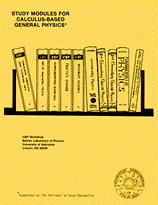Instructional Materials in Physics and Astronomy
Date of this Version
1975
Document Type
Article
Abstract
If you have ever worn glasses, used a magnifying glass, looked through a telescope, or looked in a mirror, you have some idea of the effect that transmitting and reflecting materials have on light. When light passes from one material to another it is refracted. It is this property of light that is used in making eye glasses and magnifying glasses. The laws of reflection and refraction have immediate application in the construction of optical instruments. Two main objectives of most optical devices are to increase the light-gathering area and to provide a magnified image. Magnification is not usually the only requirement. For instance, the important characteristic of a large astronomical telescope is its diameter, which allows the telescope to gather more light, allow shorter exposures, and give higher resolution.
In this module we shall apply the laws of reflection and refraction to two types of simple devices, thin lenses and spherical mirrors. Understanding of these two simple devices sets the stage for the module Optical Instruments, which utilizes various combination of lenses and mirrors to produce the instruments' desired effects.



Comments
From Study Modules for Calculus-Based General Physics
Copyright © 1975 CBP Workshop, University of Nebraska–Lincoln.
Reproduction rights granted.